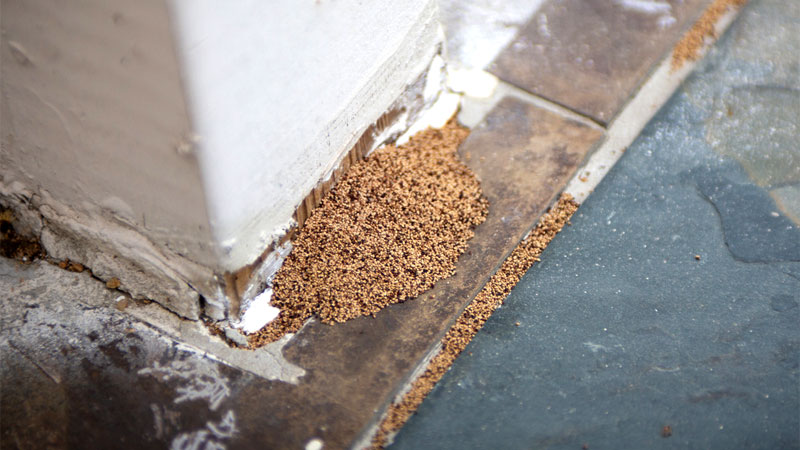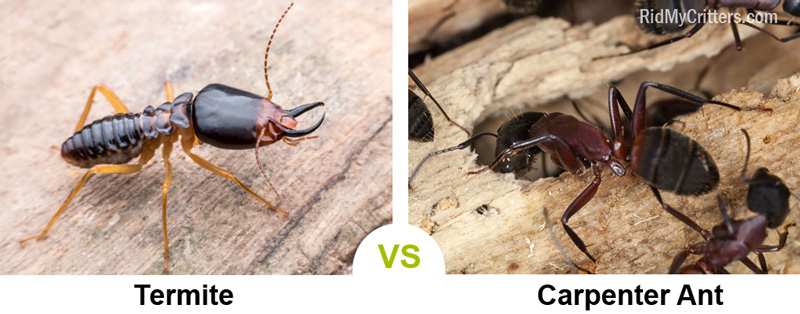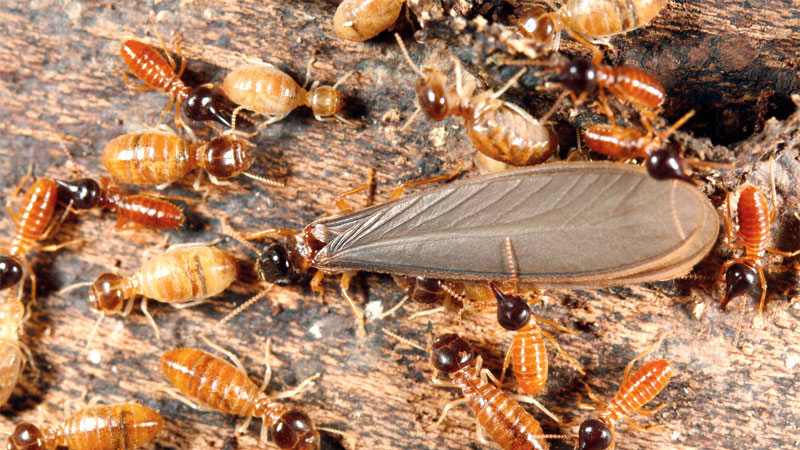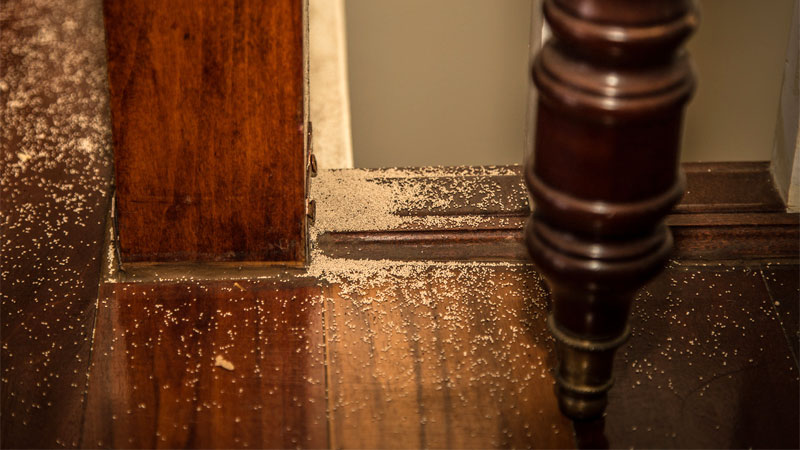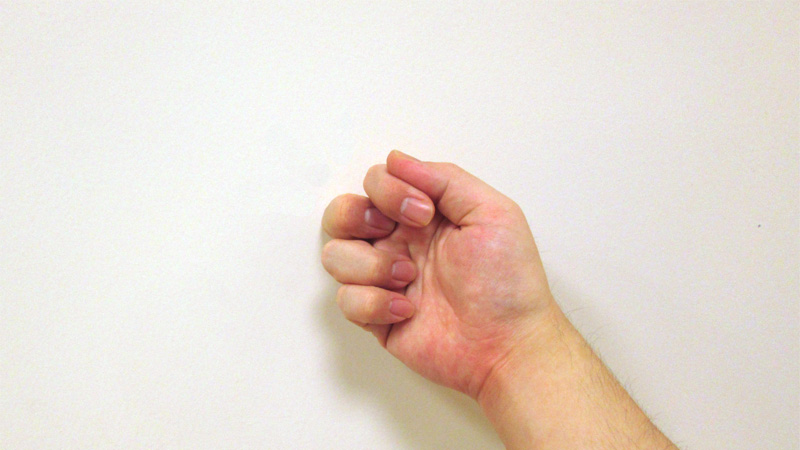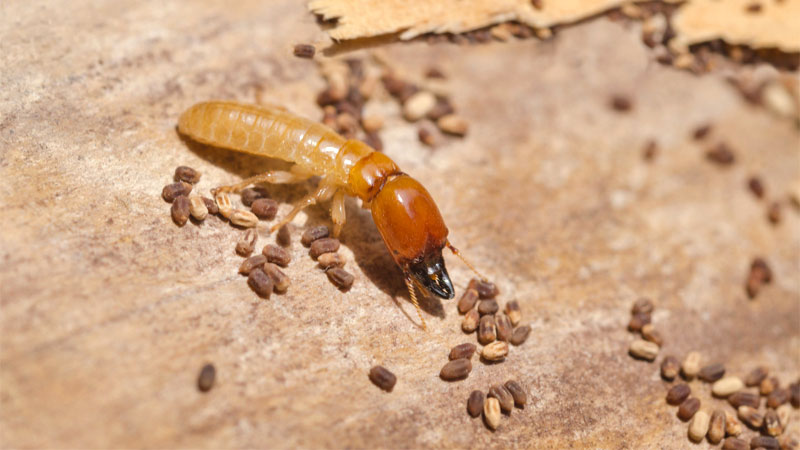Here at RMC, we understand that everyone’s pest problem is unique. Some might be dealing with wayward geese, others with stray cats, you may have a bee allergy, or perhaps mealybugs have gotten into your houseplant.
But there are some critters that instill a universal dread – often for good reason. A perfect example of this is a pest that you rarely spot until it’s too late (unless you manage to see termite alates in their mating flight, that is).
Unlike many other critters, the fear of termites is far from a simple phobia. It’s grounded in the fact that termites are a legitimate threat to almost any home and cause an insane amount of property damage across the globe every year. The good news is that most species of termites will actually avoid your home or garage.
But what about those species that actually do take up residence in your home? Today we’re going to go through a checklist of signs that you might have termites so you can rest a little easier (or catch an infestation early on).
Termite or Carpenter Ant? Spotting the Differences
Before we begin, however, we have to deal with the elephant (bug?) in the room: telling whether you have termites or carpenter ants. There are many critters that look like termites, but few are as frequently confused. So here’s a few ways to tell the two apart.
Behavior
Carpenter ants are more likely to be seen foraging than termites because the ants actually can’t digest cellulose. Because they can use tunnels within your home’s walls, floor, and ceiling to travel unseen, it can still be difficult to spot them. You’ll sometimes spot workers foraging, however.
Meanwhile, termites are more likely to spend most or all of their lives hidden in the walls with the exception of the alates during mating season. Even though they’re blind, termites will still do what they can to avoid any sources of light.
Damage
Termites tend to tunnel close to the surface, which can still lead to extensive damage. Because they feed on cellulose, the structural integrity of the infested wood becomes compromised. When carpenter ants get into your walls, however, they’re burrowing into already rotting wood, meaning they’re exacerbating existing structural damage.
Note that both critters have been known to burrow through drywall, even though they don’t consume any of the material.
Termite Frass
Termite poop resembles sawdust or little pellets about the size of sesame seeds or coffee grounds. Carpenter ant frass looks more like wood shavings and contains bits of bugs and wood splinters that were excavated from the nest.
Physical Appearance
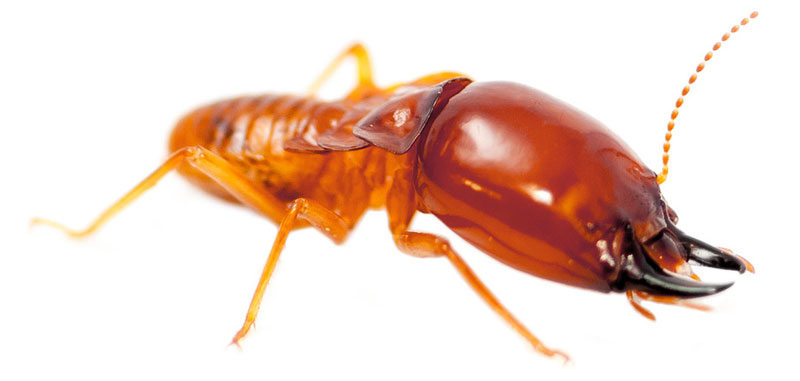
Carpenter ants belong to the genus Camponotus and tend to look like very large ants, sometimes measuring a full inch in length. As with other ants, they have an “elbow” in their antennae, and the alates have larger forewings and smaller hindwings.
While often mistaken for ants, termites are actually a type of roach, with straight antennae and no pinching between the thorax and abdomen. Both sets of wings on the alates are the same size, and termites tend to be a light color or even slightly transparent.
Wood Preferences
Another big difference is that termites come in three flavors: drywood, dampwood, and subterranean.
As their names imply, drywood termites prefer older dry wood, dampwood termites prefer damp or moldy wood, and subterranean termites tend to burrow around underground in search of food sources. Termites feed on cellulose, which is what binds wood together. This means structures can become highly unstable when termites have been feeding on them.
Carpenter ants, meanwhile, can’t digest cellulose and will only attack rotting wood. Thus, if you discover carpenter ants, it’s likely a sign of far worse damage than the ants themselves have caused.
Signs of Termites in Walls
If you’re looking for a telltale sign of an active termite infestation, we’ve got to be honest – you won’t find one unless you’re lucky enough to actually spot a live termite. Termite swarmers (i.e. alates in their mating flight) is a pretty obvious sign, but this is a very brief event. Beyond that, you’ll almost never actually see a termite.
Thankfully, there are several indicators that you either have or have had a termite infestation. Termites are known to reinfest abandoned termitaries (or termitariums, i.e. termite nests), and there’s also a possibility that there was a prior infestation in your home or garage tha left behind signs you’re only just noticing.
As a result, it’s vital that you look for multiple signs and don’t simply assume that you do or do not have an active termite infestation. We’ll discuss this in more depth later.
Easily Spotted Signs
In many cases, you can find signs of termite damage without too much effort. One sign alone is often not enough to prove an active infestation, but finding two or more increases the likelihood of termite activity in your walls or attic.
#1 – Discarded Wings
If you spot discarded insect wings on your window sill or along the inside or outside walls, you may have just missed a mating swarm.
#2 – Mud Tubes in the Basement
This is a sign of subterranean termite activity. The oblong tubes are about the width of a pencil and are used by the termites to get around without exposing themselves to predators. These mud tunnels can last for a long time, so they don’t always signify current activity.
#3 – Termite Feces
Perhaps the best sign of termite activity can be found along your baseboards. Termite droppings will end up underneath those termite holes. Sometimes referred to as termite dust, the droppings actually look like sawdust.
Generally speaking, if a pest control specialist previously eradicated a termite colony, they’ll clean up the termite frass so it’s easier to spot any new termite activity. However, there are occasions where even the pros miss a spot, so always be sure to check in and verify if the spot was missed.
A good exterminator service will usually keep photos of their previous termite inspection on file.
#4 – Numerous Tiny Holes
This can be some pretty strong evidence of termites. The holes are small entrances through which termite workers dispose of excrement and other unwanted materials.
They’re only about the size of pin holes and can be very difficult to spot. However, the next indicator of termites can help you locate these holes if you don’t find the holes first. Finding both is a very strong indicator of termites over other potential wall invaders.
#5 – Strange Sounds
One really good sign of termite infestations is the unusual noises coming from your walls, ceiling, or attic area. Because most termite species are bling, they communicate through audio cues.
A strange clicking sound or rattling noises coming from your walls is very likely the sound of termites communicating. Of course, you could have some other critter in your walls making the noise, but this is still a great indicator.
#6 – Visibly Damaged Wood Trim
It’s pretty obvious something’s in your walls if the wood trim, wood paneling – or really any wooden structure within your home including furniture – has visible signs of damage, such as the aforementioned pin holes or is covered in termite feces.
Deeper Investigations
Sometimes the signs of termites aren’t so obvious and can actually be completely overlooked – especially in older homes. The following three symptoms can suggest the presence of termites, but you shouldn’t go on them alone.
#7 – Walls Sound Hollow
Let’s face it, a lot of homes don’t have very good insulation and may even have hollow walls. Rooms with drywall are especially guilty of sounding hollow when you knock on them. But a well insulated home should have a solid sound when you knock on the walls.
When all of your walls sound solid except for one (or only a few isolated portions have a hollow sound), it could be a sign of a termitary. Also, if you know your home is insulated or are checking furniture, any hollow sounding wood could be an indicator that termites have been feasting.
#8 – Distortions in Paint or Wallpaper
Age can sometimes cause paint or wallpaper to bubble or begin to flake. However, you shouldn’t be seeing this in newer homes unless there’s water damage.
In the event you’re seeing this disturbance and there’s no other indicators of water damage, the distortions may be caused by the presence of termites just underneath.
#9 – Shift in the Foundation
Subterranean termites aren’t all that interested in invading your home, but they are notorious for burrowing under foundations. A subterranean termite colony can eventually cause an entire house to shift.
While a surveyor (or a round object that refuses to stay in place) can identify this shift, it can also be caused by settling or underground cavities such as mines or gas pockets collapsing. Thus it’s often not a good idea to rely on this sign alone – if you even spot it.
Assessing and Addressing the Severity
Once you’ve found indicators that there is or was a termite problem, the next step is to assess the problem, followed by addressing it. Here are some good options for these next steps.
Verifying an Active Infestation
This can be a tough one. The sounds are perhaps your best sign outside of an actual sighting. Finding fresh termite frass is also a great indicator of termites. If the signs never change, it’s possible the colony was wiped out already, but it’s also possible they’ve just migrated to another part of your home.
How Bad Is the Damage?
The biggest question after whether or not there actually is an infestation is just how extensive the damage is. If you’re an experienced DIYer and are comfortable working with drywall or replacing trim, consider replacing the damaged portion of wall.
Work slowly, keeping an eye out for any signs of termite activity as you go. By keeping an eye out for termite galleries and following any termite tunnels you find, you can sometimes tell if there’s severe damage or if you caught the colony early on.
Of course, not everyone wants to put a bigger hole in a wall already full of pin holes. In this case, you may want to shop around or a contractor or even request a professional inspection.
Even if there isn’t a current infestation, assessing and repairing the damage can save a lot of money down the road and also help prevent future infestations.
When to Try DIY Methods
Before you hire a termite control specialist, there are some termite treatments you can do yourself. Termite bait traps can be one way to attack the queens and control the population. However, keep in mind that a termitary tends to have thousands of termites, not to mention multiple queens.
Also, worker termites will sometimes molt into soldier termites or alates. Thus, killing off the queens won’t also eliminate any satellite colonies and a possible return later to the old nest.
Oh, and despite what you may have heard, using kerosene or gasoline against a termitary is obviously a terrible solution
The best method of attack here is actually prevention, by using termiticides when swarmer termites are spotted and using the same exclusionary tactics as you would most other insects. And if you have any doubt there’s an established termite colony, don’t try to handle it on your own. That said…
When to Call a Professional
As much as we’d like to tell you that you can take care of every problem yourself, termites are one situation where you may be better off getting some certified help.
If you’ve assessed the situation and it looks like you have a major infestation or you’re simply not sure, it’s time to hire a professional pest control company for a second opinion. In some cases, the inspection may even be free.
What’s important is that the exterminator’s fee will be much smaller than the amount of property damage you could end up with. And if you’ve previously had an issue with termites, there’s a good chance your previous contract includes regular termite inspections already.
- How to Get Rid of Hawks - March 8, 2024
- How to Get Rid of Pill Bugs (Rolly Pollies) - March 1, 2024
- How to Get Rid of Groundhogs (Woodchucks) - February 5, 2024

